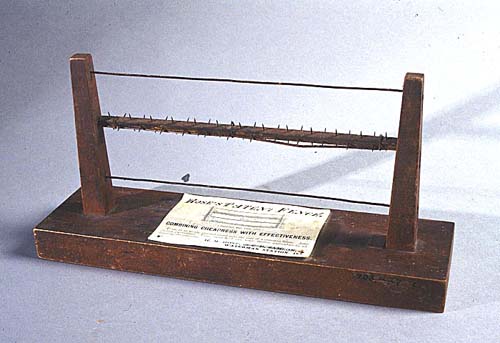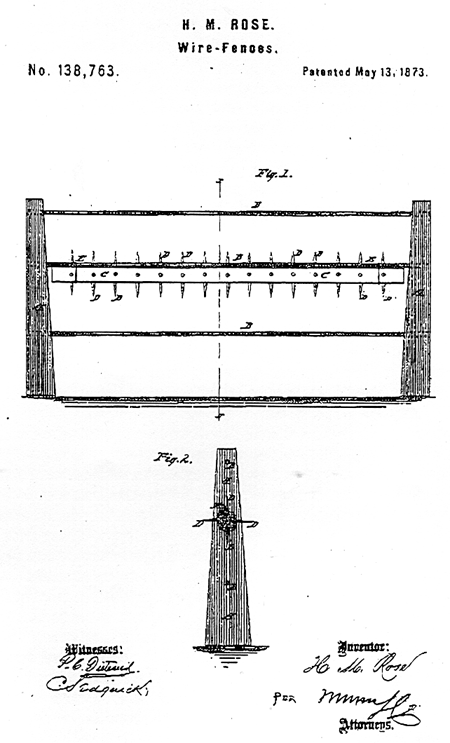Patent Model: Improvement in Wire Fences

Henry Rose of Waterman Station, Illinois, developed improvements on several farm devices and made and sold them in his factory.
Rose saw the need for a light-weight yet sturdy, inexpensive-to-build fence to keep stock from wandering. His 1872 patent application No. 138,762 was for a "combination of strips, provided with metallic points, (used) with the wires and posts of an ordinary wire-fence."

Click image to study the diagram of the wire-fence.
His invention was a wooden strip furnished 6 to 8 inches apart with long or short metal points cut at a slant from flat wire. This strip could be attached with wire bands to the wire or wires of a wire-fence, or to a rail in a wooden fence. The protruding points would prick the side of a cow or steer that leaned or pushed on the fence. Once the animal felt the metal points, it would avoid the pain by no longer brushing against the fence. This invention or improvement would be a good addition for a farmer who had already built a fence that did not have barbed wire in it.







